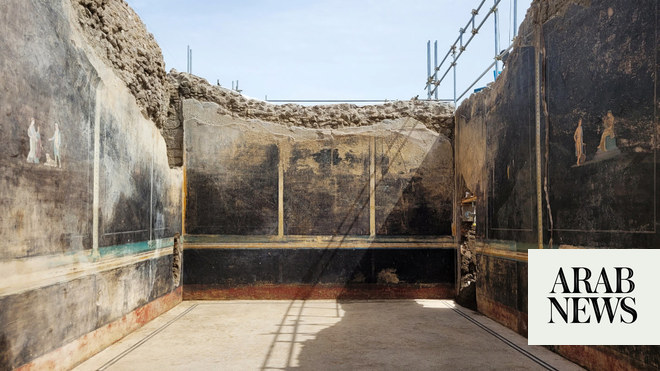
If you thought barn conversions were a relatively recent development for the property-owning classes, you’d be wrong – probably by 16 or 17 centuries.
Archaeologists at the site of a Roman villa complex in the east Midlands have discovered that its wealthy owners converted an agricultural timber barn into a dwelling featuring a bathing suite with a hot steam room, a warm room and a cold plunge pool.
Fresh evidence of the villa owners’ lavish lifestyle comes two years after a family found fragments of ancient pottery on a ramble through farmland in Rutland. Archaeologists from the University of Leicester, in partnership with Historic England and Rutland county council, later unearthed a rare mosaic depicting Homer’s Iliad.
The finding – now protected by the government – was described as “the most exciting Roman mosaic discovery in the UK in the last century”.
Now the same team has unveiled further discoveries at the site, including the conversion of a barn the size of a small church.
The barn was supported by large timber posts and may have had two storeys. It was converted to stone in the third or fourth century, with one end becoming a dwelling with many floors, and the other retained for agricultural or craft work.
The main feature of the dwelling was a Roman-style bath suite with sophisticated underfloor heating and heating ducts built into the walls. A tank outside the building may have been used to collect water from the roof.
The team also revisited the area of the mosaic which was thought to be laid in a dining room, known as a triclinium, within the main villa building. They discovered fragments of polished marble, broken stone columns and painted wall plaster that hint at grand decoration.
The dining room had been built as an extension to the main villa, suggesting that the owners wanted a special area for feasting as they gazed over the Iliad mosaic.
The new excavations also revealed additional mosaics in the corridors leading to the dining room, including one with a kaleidoscopic geometric design.
John Thomas, the deputy director of the University of Leicester archaeological service, said: “It’s difficult to overstate the significance of this Roman villa complex to our understanding of life in late Roman Britain. While previous excavations of individual buildings, or smaller-scale villas, have given us a snapshot, this discovery in Rutland is much more complete and provides a clearer picture of the whole complex.
“The aim of this year’s work has been to investigate other buildings within the overall villa complex to provide context to the Trojan war mosaic. While that is a wonderful, eye-catching discovery, we will be able to learn much more about why it was here, and who might have commissioned it, by learning about the villa as a whole.”
Duncan Wilson, Historic England’s chief executive, said the site had “posed many questions about life in Roman Britain”. Its significance would become clearer as the evidence was examined over the next few years by specialists, he added.












